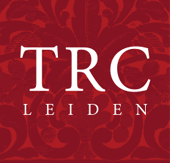Berlin wool is a type of wool derived from Merino sheep in Saxony, Germany. In the nineteenth century, the wool was sent to the city of Gotha to be combed (worsted), spun and then taken to Berlin where it was dyed and sold. The wool was softer and separated more easily into strands than types of wool from England and the Netherlands, which were widely used at the time.
This meant that Berlin wool was easier to work with, especially for crewel embroidery and the form of embroidery that soon become known as Berlin wool work. The wool also easily absorbed the new aniline dyes, which were developed from the mideighteenth century onwards, and soon the wool was available in a previously unavailable variety of bright colours and shades. Although the popularity of Berlin wool work declined by the 1880's, the production of Berlin wool only ended in the 1930's.
Making artificial flowers in Berlin wool was another fashionable pursuit in mid-nineteenth century Europe and North America. The shape of the petals and leaves was made of bent wire or canvas mesh and then worked in Berlin wool in the plant’s natural colours. Individual flowers and leaves were used to decorate table mats and similar items. Sprays of flowers were often put into ornamental vases.

